Archive for 2011
-
Oracle Strikes Back
Eddy Elfenbein, September 29th, 2011 at 2:30 amOracle Corp. (ORCL) fired back at Autonomy Corp. (AU.LN, AUTNY) Wednesday, saying the British business-analytics company’s chief executive didn’t tell the truth about an April meeting purportedly held to shop the business around.
The dispute also concerns Oracle rival Hewlett-Packard Corp. (HPQ), which last month agreed to buy Autonomy in a deal valued at about $10.3 billion. Oracle has followed an increasingly common script in Silicon Valley by morphing into one of H-P’s fiercest competitors.
Oracle on Wednesday repeated its contention that Autonomy approached its executives before H-P publicly made its offer. Oracle has said it rejected the Autonomy deal because the price was too high.
Autonomy Chief Executive Mike Lynch later disputed Oracle’s version of events, which prompted the California-based software giant to issue a statment late Wednesday.
According to Oracle, Lynch and investment banker Frank Quattrone met with Oracle mergers-and-acquisitions chief Douglas Kehring and President Mark Hurd. The Autonomy chief pitched his company with a PowerPoint presentation, Oracle said.
“Either Mr. Lynch has a very poor memory or he’s lying,” Oracle’s statement said. “The Lynch shopping visit to Oracle is easy to verify. We still have his PowerPoint slides.”
In an emailed statement, Lynch denied that the April meeting was intended to pitch a possible sale of the company.
“In April there was a 30-40 minute meeting between Autonomy and Mark Hurd, which was set up by Frank Quattrone as an introduction to Mark Hurd,” Lynch said. “Oracle is an Autonomy customer. In the meeting, in response to a joke about Mr. Quattrone’s presence, it was made clear Autonomy was not for sale and there was no process underway.”
Lynch added that Autonomy hadn’t yet engaged Quattrone’s company at the time and said there has been no contact with Oracle since then.
Oracle shares were recently up 0.6% at $29.64 in after-hours trading. The stock is up 8.3% over the past year.
-
Minimum Variance Portfolios
Eddy Elfenbein, September 28th, 2011 at 4:58 pmEric Falkenstein is probably the financial blogosphere’s biggest advocate of Minimum Variance Portfolios (MVP). The idea is that in investing risk and reward are not trade-offs. In fact, the lower the risk, the higher the reward. As counter-intuitive as this sounds, the numbers back it up.
Falkenstein has shown that a portfolio constructed of the lowest-risk stocks in the S&P 500 has outperformed the index. I got the data off his site and here are the returns since 1998:
Since the beginning of 1998 through August 2011, the S&P 500 has returned 31.59% while the Minimum Variance Portfolio has returned 211.18%. Annualized, that’s a lead of 8.7 to 2%.
But here’s the kicker: the MVP has accomplished this with…well, minimum variance.
Get ready for some math.
In the table below, the blue dots indicate all of the daily changes in the chart above. The X-axis is the changes in the S&P 500. The Y-axis has the changes for the MVP.
The key is that the MVP doesn’t go as high as the S&P 500 during an up day, nor does it fall as low as the index during a down day. I added the diagonal red line to show the 1-to-1 divide.
Notice how the blue dots fall below the red line in the upper right quadrant and above the red line in the lower left quadrant. That’s what MVP is all about.
The black is the linear trend and the formula is the classic linear equation (y=mx+b). The slope of the trend line is 0.558. What this means is that for every one unit the black line moves to the right, it climbs by 0.558 units, and for every one unit it falls, it drops by 0.558 units.
In finance speak, that’s the beta of the portfolio, 0.558. If a portfolio has a beta of 1.0, it exhibits the same variance as the S&P 500. If it’s greater than 1.0, the portfolio swings greater than the market.
Historically, our Buy List has a beta of 0.94.
The b in the equation is the y-intercept, meaning that’s where the trend crosses the Y-axis when x=0. But more importantly for us, this also tells us how well the MVP has done against the S&P 500. Since it’s positive, the MVP has beaten the market by an average of three basis points per share, or 0.03%. (It’s actually about 2.5 basis points but Excel rounded up.)
So despite having nearly half the variance as the overall market, the MVP has crushed the S&P 500 over the 13 years years.
If you’re interested in learning more, here’s a link to Eric’s book, Finding Alpha: The Search for Alpha When Risk and Return Break Down. And here are the 47 stocks currently in the MVP (it’s rebalanced every six months):
Company Symbol 3M CO MMM ABBOTT LABS ABT AMERISOURCEBERGE ABC BAXTER INTL INC BAX BECTON DICKINSON BDX CAMPBELL SOUP CO CPB CEPHALON INC CEPH CLOROX CO CLX COCA-COLA CO KO COLGATE-PALMOLIV CL CONAGRA FOODS CAG CONS EDISON INC ED CR BARD INC BCR DOMINION RES/VA D DUKE ENERGY CORP DUK DUN & BRADSTREET DNB GENERAL MILLS IN GIS GENUINE PARTS CO GPC HJ HEINZ CO HNZ HOSPIRA INC HSP IBM IBM INTEGRYS ENERGY TEG JM SMUCKER CO SJM JOHNSON&JOHNSON JNJ KELLOGG CO K KIMBERLY-CLARK KMB KRAFT FOODS INC KFT KROGER CO KR L-3 COMM HLDGS LLL LABORATORY CP LH MCCORMICK-N/V MKC MCDONALDS CORP MCD MEDTRONIC INC MDT MILLIPORE CORP MIL PEPSICO INC PEP PFIZER INC PFE PINNACLE WEST PNW PROCTER & GAMBLE PG PROGRESS ENERGY PGN QUEST DIAGNOSTIC DGX RAYTHEON CO RTN REYNOLDS AMERICA RAI SOUTHERN CO SO WAL-MART STORES WMT WATSON PHARM WPI WISCONSIN ENERGY WEC XCEL ENERGY INC XEL -
The Plunge of Major Financials
Eddy Elfenbein, September 28th, 2011 at 10:23 amCheck out how sharply Goldman Sachs ($GS), Citigroup ($C), Bank of America ($BAC), and Morgan Stanley ($MS) have fallen since the start of the year:
-
Durable Goods Orders Fell 0.1% in August
Eddy Elfenbein, September 28th, 2011 at 9:49 amThe futures indicate that the stock market will open modestly higher today. Yesterday was a very good day for stocks although we lost a lot of our gains as the day wore on.
This morning, the Commerce Department reported that durable goods orders fell in August by 0.1%. This isn’t a huge drop but in July, orders soared by 4.1%.
The important number to watch in the durable goods report is orders of “non-defense capital goods.” This is a good barometer for telling us how much businesses are spending.
One of the major problems in this economy is that businesses are sitting on tons of cash but they’re not willing to spend it. The good news is that orders of non-defense capital goods increased by 1.1% in August after falling 0.2% in July.
-
Morning News: September 28, 2011
Eddy Elfenbein, September 28th, 2011 at 6:20 amEU Barroso Calls For Use Of Fiscal Policy To Boost Growth
Greek Vote Approves a Despised Property Tax
Greek Strikes Maintain Momentum
Nagging Fears on Europe Slow a Wall Street Rally
Euro Crisis Makes Fed Lender of Only Resort
Obama Jobs Plan May Prevent 2012 Recession
Dallas Fed President Fisher Says Central Bank Is Under Attack From Ron Paul, Barney Frank
Health Insurers Push Premiums Sharply Higher
Free Checking Falls to 45% of Customer Accounts, Bankrate Says
Taiwan Semiconductor Shares Climb After New York Chip Venture with Intel
For Bank of America, a $50 Billion Claim of Havoc Looms
Time Warner Balks at European Media Prices
SABMiller a Step Closer to Snaring Australia’s Foster’s
Tasgall Group: Granger Things Have Happened
Szelhamos Rules: You Know What I Like
Be sure to follow me on Twitter.
-
The 50-DMA Is In Sight
Eddy Elfenbein, September 27th, 2011 at 2:55 pmI’ll feel much better when the S&P 500 finally crosses above its 200-day moving average. The 50-DMA, however, may be broken very soon.
The 200-DMA is running about 1,281 right now but the 50-DMA is currently at 1,208.
-
Richard Fisher on Dissenting
Eddy Elfenbein, September 27th, 2011 at 2:17 pmAt the last FOMC meeting, Dallas Fed President dissenting from approving the Fed’s policy statement. Today, he explained why. Here’s part of his speech:
One other factor gave me pause and that was, and remains, the moral hazard of being too accommodative. For years, I have been arguing that monetary policy cannot solve the problem of substandard economic performance unless it is complemented by fiscal policy and regulatory reform that encourages the private sector to put to work the affordable and abundant liquidity we are able to create as the nation’s monetary authority. These actions are not within the Fed’s purview; they are the business of Congress and the president. Chairman (Ben) Bernanke said it well in his recent speech at Jackson Hole (Wyo.): “Most of the economic policies that support robust economic growth in the long run are outside the province of the central bank.” Both within the FOMC and in public speeches, I have argued that until our fiscal authorities get their act together, further monetary accommodation―be it in the form of quantitative easing or performing “jujitsu” on the yield curve through efforts such as Operation Twist―will represent nothing more than pushing on a string.
-
The S&P 500 is +2.25% at Noon
Eddy Elfenbein, September 27th, 2011 at 12:03 pm -
The Upcoming Third-Quarter Earnings Season
Eddy Elfenbein, September 27th, 2011 at 10:52 amThis is, thankfully, the final week of the third quarter. In a few weeks, the third-quarter earnings season will begin.
For last year’s Q3, the S&P 500 reported earnings of $21.56. Wall Street currently expects earnings of $24.72 for this year’s Q3 which represents an increase of 14.7%. For the second quarter, the S&P 500 earned $24.86 so sequential earnings may decline slightly.
Earnings growth for the fourth quarter is actually expected to accelerate to 18.7%. But I wouldn’t be surprised to see those estimates get pared back between now and the end of the year.
Here’s the expected earnings third-quarter growth for the 10 S&P 500 sectors:
Consumer Discretionary 12.6%
Consumer Staples 7.8%
Energy 50.3%
Financials 2.8%
Health Care 11.4%
Industrials 10.5%
Information Technology 15.2%
Materials 27.7%
Telecommunication Services 2.2%
Utilities 1.7% -
Share Traders More Reckless Than Psychopaths, Study Shows
Eddy Elfenbein, September 27th, 2011 at 9:43 amTwo weeks ago, yet another case of rogue trading shocked the financial world when UBS trader Kweku Adoboli was arrested for allegedly squandering some $2.3 billion with a risky and unauthorized investment scheme. The 31-year-old, who had been based in London for the Swiss bank, remains in jail. The bank’s chief executive Oswald Grübel, meanwhile, has resigned over the scandal — the third major embarrassment to rattle the institution in just a few years.
The situation mirrors a similar scandal at French bank Société Générale, where another young “rogue trader,” Jérôme Kerviel, gambled away billions in 2010. He is still serving a three-year jail sentence. But why do these situations keep arising in the financial world?
According to a new study at the University of St. Gallen seen by SPIEGEL, one contributing factor may be that stockbrokers’ behavior is more reckless and manipulative than that of psychopaths. Researchers at the Swiss research university measured the readiness to cooperate and the egotism of 28 professional traders who took part in computer simulations and intelligence tests. The results, compared with the behavior of psychopaths, exceeded the expectations of the study’s co-authors, forensic expert Pascal Scherrer, and Thomas Noll, a lead administrator at the Pöschwies prison north of Zürich.
Appetite for Destruction
“Naturally one can’t characterize the traders as deranged,” Noll told SPIEGEL. “But for example, they behaved more egotistically and were more willing to take risks than a group of psychopaths who took the same test.”
Particularly shocking for Noll was the fact that the bankers weren’t aiming for higher winnings than their comparison group. Instead they were more interested in achieving a competitive advantage. Instead of taking a sober and businesslike approach to reaching the highest profit, “it was most important to the traders to get more than their opponents,” Noll explained. “And they spent a lot of energy trying to damage their opponents.”
Using a metaphor to describe the behavior, Noll said the stockbrokers behaved as though their neighbor had the same car, “and they took after it with a baseball bat so they could look better themselves.”
The researchers were unable to explain this penchant for destruction, they said.
Speaking of traders, Cullen Roche of Pragmatic Capitalist points us toward this video which made the rounds yesterday. Lots of people think this trader in the video is some sort of brave truth teller.
My take is that his comments are silly and frivolous. He doesn’t say anything more than “things are bad because they’re bad because they’re not good.” Sadly, this sort of thing is popular these days.
Felix Salmon has more.
-
-
Archives
- April 2025
- March 2025
- February 2025
- January 2025
- December 2024
- November 2024
- October 2024
- September 2024
- August 2024
- July 2024
- June 2024
- May 2024
- April 2024
- March 2024
- February 2024
- January 2024
- December 2023
- November 2023
- October 2023
- September 2023
- August 2023
- July 2023
- June 2023
- May 2023
- April 2023
- March 2023
- February 2023
- January 2023
- December 2022
- November 2022
- October 2022
- September 2022
- August 2022
- July 2022
- June 2022
- May 2022
- April 2022
- March 2022
- February 2022
- January 2022
- December 2021
- November 2021
- October 2021
- September 2021
- August 2021
- July 2021
- June 2021
- May 2021
- April 2021
- March 2021
- February 2021
- January 2021
- December 2020
- November 2020
- October 2020
- September 2020
- August 2020
- July 2020
- June 2020
- May 2020
- April 2020
- March 2020
- February 2020
- January 2020
- December 2019
- November 2019
- October 2019
- September 2019
- August 2019
- July 2019
- June 2019
- May 2019
- April 2019
- March 2019
- February 2019
- January 2019
- December 2018
- November 2018
- October 2018
- September 2018
- August 2018
- July 2018
- June 2018
- May 2018
- April 2018
- March 2018
- February 2018
- January 2018
- December 2017
- November 2017
- October 2017
- September 2017
- August 2017
- July 2017
- June 2017
- May 2017
- April 2017
- March 2017
- February 2017
- January 2017
- December 2016
- November 2016
- October 2016
- September 2016
- August 2016
- July 2016
- June 2016
- May 2016
- April 2016
- March 2016
- February 2016
- January 2016
- December 2015
- November 2015
- October 2015
- September 2015
- August 2015
- July 2015
- June 2015
- May 2015
- April 2015
- March 2015
- February 2015
- January 2015
- December 2014
- November 2014
- October 2014
- September 2014
- August 2014
- July 2014
- June 2014
- May 2014
- April 2014
- March 2014
- February 2014
- January 2014
- December 2013
- November 2013
- October 2013
- September 2013
- August 2013
- July 2013
- June 2013
- May 2013
- April 2013
- March 2013
- February 2013
- January 2013
- December 2012
- November 2012
- October 2012
- September 2012
- August 2012
- July 2012
- June 2012
- May 2012
- April 2012
- March 2012
- February 2012
- January 2012
- December 2011
- November 2011
- October 2011
- September 2011
- August 2011
- July 2011
- June 2011
- May 2011
- April 2011
- March 2011
- February 2011
- January 2011
- December 2010
- November 2010
- October 2010
- September 2010
- August 2010
- July 2010
- June 2010
- May 2010
- April 2010
- March 2010
- February 2010
- January 2010
- December 2009
- November 2009
- October 2009
- September 2009
- August 2009
- July 2009
- June 2009
- May 2009
- April 2009
- March 2009
- February 2009
- January 2009
- December 2008
- November 2008
- October 2008
- September 2008
- August 2008
- July 2008
- June 2008
- May 2008
- April 2008
- March 2008
- February 2008
- January 2008
- December 2007
- November 2007
- October 2007
- September 2007
- August 2007
- July 2007
- June 2007
- May 2007
- April 2007
- March 2007
- February 2007
- January 2007
- December 2006
- November 2006
- October 2006
- September 2006
- August 2006
- July 2006
- June 2006
- May 2006
- April 2006
- March 2006
- February 2006
- January 2006
- December 2005
- November 2005
- October 2005
- September 2005
- August 2005
- July 2005
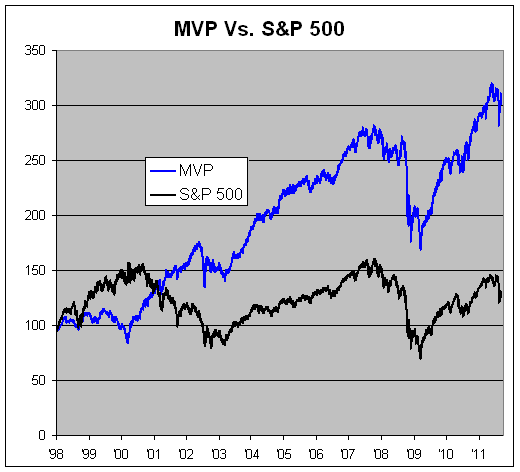
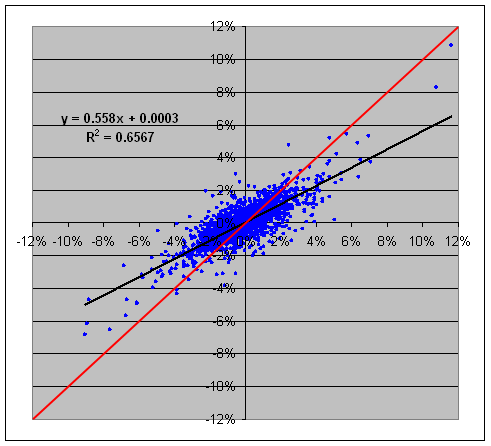
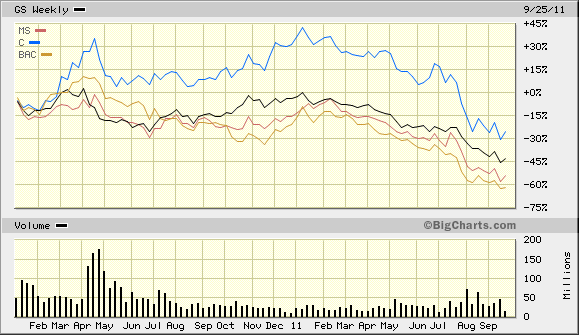
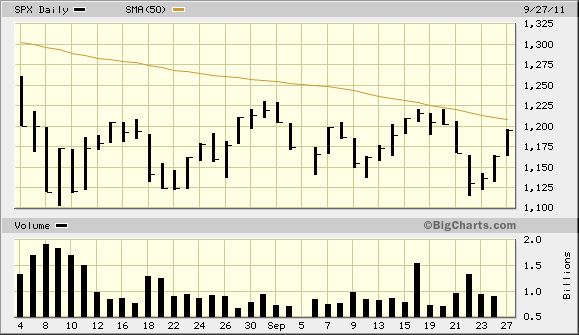
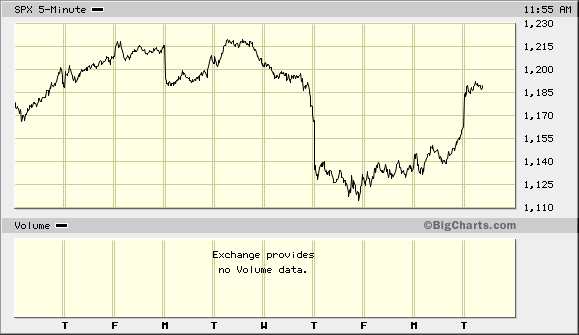
 Eddy Elfenbein is a Washington, DC-based speaker, portfolio manager and editor of the blog Crossing Wall Street. His
Eddy Elfenbein is a Washington, DC-based speaker, portfolio manager and editor of the blog Crossing Wall Street. His